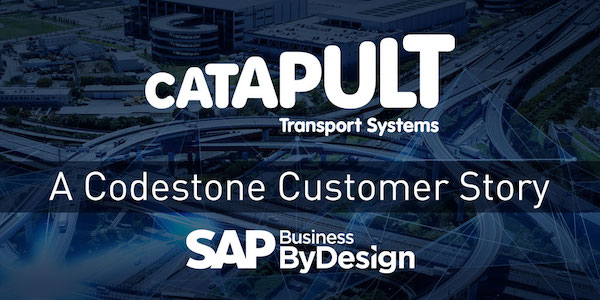The common impression that many have of enterprise resource planning (ERP) is based on the early functions of the systems. For example, an early function included manufacturing resource planning, which was designed to tackle a specific business process such as managing the mass production of standardized goods on assembly lines.
ERP was initially based on industry and manufacturing and geared predominantly to mass production, an inflexible process that limits the variety of products available to consumers. With mass production, the products produced on one production line are identical, making it very difficult to introduce variety and range to satisfy diverse needs. This type of manufacturing was in direct opposition to customization, a more expensive proposition. Mass production lends itself to only a limited amount of customization, and only when the customer is willing to make it worthwhile for the manufacturer/producer. A minimum order threshold needs to be reached for a new line in order to cover starting costs.

The Rise of the Social Customer
Currently, we are witnessing a strong shift in customer behavior and expectations, which, in turn, is creating a radical long-term change in the relationship between customers and companies. Central to this customer revolution is the rise in power of the “social customer.” The web, as well as social technologies, have facilitated obtaining more information with greater ease. Because of this, customers have a much greater say over the flow and control of this information, their products and their services. Social customers are no longer satisfied with the corporate response to their issues; they want and expect genuine engagement with the company. This significant change is contributing to the transformation in manufacturing from a mass production model to an on-demand production model.
More so than in the past, customers have a greater impact on how companies plan production, as their demands can be heard loud and clear — a result of cloud, mobile and social technologies. Clients are no longer in a position where they have no choice; rather, they’re in a position to inform themselves about the various options available and can exercise choice and discretion before making a purchasing decision. This is the overarching environment that has produced the on-demand economy.
Industry 4.0
This is, consequently, a useful time to introduce the term and concept of Industry 4.0. Industry 4.0 was first introduced by the German government when they launched a project under the name to digitize manufacturing at the Hannover Messe in 2011. Industry 4.0 was part of a strategy that promotes “the fusion of the online world and the world of industrial production,” as Angela Merkel very succinctly puts it. The term clearly hints at the fact that today, the world is undergoing another industrial revolution, brought on by the major shift in power between consumers and producers. This is a direct result of the digitization of everything.
Although the term Industry 4.0 and the reference architecture model behind it originate from Germany, it’s quite clear that the vision and reality of the fourth industrial revolution (as it has come to be known) has caught the attention of organizations across the globe, and it encompasses much more than manufacturing (even though manufacturing is the main sector involved at the moment).
The On-Demand Economy
Industry 4.0, more so than its predecessors, is poised to address the emergence of an on-demand economy. So can Industry 4.0 be interpreted as a tool for manufacturers to respond to a consumer base that has rapidly changing demands and expectations? It’s no longer just about the production of goods at the lowest cost, but also about producing those goods with speed and flexibility in order to meet the consumer’s continually short-lived expectations and desires.
ERP Follows Suit
ERP, in today’s competitive and global marketplace, must adapt to the demand for a leaner manufacturing process, as well as more sharing of information between the manufacturing floor and business systems, in order to achieve new levels of efficiency. ERP providers are obliged to take into account innovations such as the Industrial Internet of Things (IIot), which is revolutionizing manufacturing by leveraging intelligent, connected devices in factories. Better data and process integration are providing even more opportunities to fine-tune their operations.
ERP systems are known for their ability to manage large amounts of transactional and operational information. This data is typically used to forecast short- and long-term production needs. Today’s on-demand consumption models paired with customers’ desire for highly customized products require real-time, or live, data. There’s enormous potential for real-time information exchange between the business layer and the production layer that could increase operational efficiency, and enable organizations to become more flexible and responsive to customized, changing demands.
Major technological advancements such as cloud computing, the Internet of Thing (IoT), cognitive computing and robotics – to name a few – enable ERP to assist manufacturers with just-in-time data. Live data insights can be applied to production strategies that cater to an on-demand consumption model.
ERP 4.0 Production Planning
Customer behavior data constitute the new fuel that drives the manufacturing production line and shop floor management capabilities of an ERP. However, analyzing customer behavior data and translating it into machine configurations requires powerful and precise data collection, as well as powerful analysis technology. On one hand, ERP must analyze omnichannel customer data — this includes physical and virtual customer touch points monitored with online and in-person data collection tools such as social media listening, website analytics, transaction history and sensors. On the other hand, ERPs must keep track of, and analyze data from industrial machines empowered with sensors, software and internet connectivity.
The goal is for ERP to play a principal role in sustaining flexible production processes that can transform actionable customer insights into tangible personalized products. For instance, instead of bringing components and parts to the assembly line in a standardized manner that produce hundreds or thousands of identical goods, ERPs can indicate certain sequencing of parts that results in customized configurations of products for individual customer needs.
ERP 4.0 Financials
One of the principal benefits of ERP is that it helps companies track the profitability of their business model. In a nutshell, ERP manages all the costs and revenues of a company. It includes capabilities that capture sales, purchasing, or warehouse management information. ERP 4.0 has the ability to document operations and transactions more accurately, thus providing companies with an even clearer picture, with less cost and revenue errors.
For example, ERP 4.0 helps manufacturers better track utility costs such as electricity and water consumption by breaking it down to how much each piece of equipment consumes at every location. In addition, ERP tracks the effectiveness and productivity of each piece of equipment. In other words, it tracks how much each piece of equipment contributes to the creation of revenue. Cost and revenue data collected at this very granular level are converted into accounting logic which, in turn, calculates the profitability.
ERP 4.0 Quality Management
Recalls are a common problem in manufacturing, with millions of products being recalled by major companies like Toyota and Tesla.
Quality management is essential for companies, because it allows them to respond to issues of recall proactively. This limits the negative impact that recalls can have on both customer satisfaction and the bottom line. But in order to pursue this strategy effectively, management requires a substantial amount of data. ERP 4.0 helps companies identify manufacturing issues across the entire supply chain, because it gives companies total visibility into the manufacturing facilities involved in their supply chain. Consequently, when production or delivery needs to be stopped, ERP 4.0 makes it easier to set things back on track by cutting setup times for machines, thereby quickly adjusting schedules and shop floor operations. For highly sensitive products like food and chemicals, production can be stopped or adjusted as soon as a problem occurs. Since stopping a production line is very disruptive and costly, adjusting batches by changing the mix of ingredients is the preferred option.
Additionally, all the data collected on product quality can be used to create forecasts and simulations of possible future challenges. Simulating recall events can lead to improved corrective actions and lower costs.
ERP is Being Reshaped
The changes that are predicted for ERP are considered to be game-changers. Enhancements like an assistive and conversational user interface will become a primary differentiator in the selection of many ERP systems and associated applications. These interfaces and their underlying intelligence are the differentiating qualities that will profoundly distinguish their system identity.
There’s no doubt among ERP producers and their customers that the digital transformation of the economy is reshaping many software applications. Systems that use new technologies — such as machine learning, cloud deployment and predictive analytics — to manage data will become industry leaders and, sooner than later, the norm.






